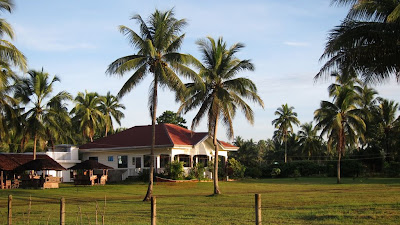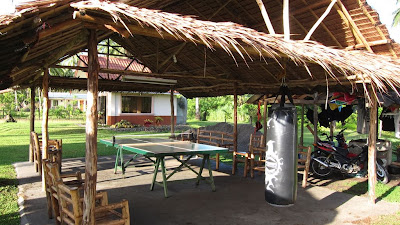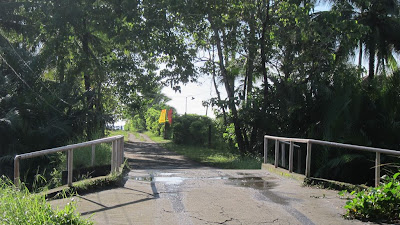Sammy Matoza just wanted to build a rest house for his family whenever they vacation in the country. Having retired as a nurse in the U.K. he wanted to take life at a slower pace. However, with the passing away of his wife and his two grown up children having their own careers already, the resolve to stay more permanently in his hometown became a brighter option. Upon the prodding of friends, since the lot that he owned was big enough, he was persuaded to open his place to the public to cater to the needs of the people as there are no other resorts in the town yet. He started to build an open air pavilion where groups can gather for meetings or reunions. The pavilion can accommodate about 200 persons. Then he built up a smaller building on the side with four fan rooms with single beds for overnight stay. He also made available two rooms in his house for guests who would like to have a fully air-conditioned room. The rooms have a queen size bed with flat TV with cable and private bath.
The plan is to slowly develop the whole place to become a resort for tourists to enjoy the breathtaking scenery around. More rooms will be constructed to provide accommodations for overnight stay. Trees are now being planted on the sides so that aside from giving shade they can serve also as bird sanctuary. A mini-golf course is also being planned on the area. This indeed is a very welcome development in the quiet town of MacArthur.
At present the place is popularly known as Matoza Beach Resort, but Sammy wants it known by another name. The name Monbon, a Waray term for a delta cropped up. The place is actually not just a delta but more of an island since it is surrounded by water on four sides: the Balocawe river to the south, Seguinon river on the west, Bocog River on north and sea to the east. Hence there is a bridge and the only one for the whole town, that has to be crossed first before reaching the beach. The resort is situated just after crossing the bridge to the right.
P.S.
The resort has recently been rented out to a mining company, hence the place is no longer available for use to the public.

The beach in MacArthur, Leyte. The sand is fine and dark brown in color. Unlike in the western part of Leyte where the sea is most of the time calm, here there are always plenty of waves.


The retirement home of Sammy Matoza that has now become a part of the Monbon Resort.

There are a few native cottages beside the beach house.

The resort has a wide sprawling open space.

The veranda is a perfect place to watch the beautiful sunrise.

In the afternoon, it is also nice to laze around watching the serene landscape of the beach.

With tainted glass panels, one still has a commanding view of the beach even when one faces the house.


The chapel where the urn of Sammy's wife is kept.

There is a pingpong table and boxing apparatus for anybody who might want to do some sweating exercise.

The guest room at the main house.

A flat screen television set with cable is available.

The pavilion which is open to the public for meetings and reunions.


After 38 years, our elementary class of 1973 from the MacArthur Central School for the first time held a reunion in this beach resort.
Out of 50 identified batchmates, 26 were able to attend.
It was a good number already and it was such a joyous occasion for all.

With the owner of the resort, Sammy Matoza.

At the perimeter of the property, four rooms with single beds with fans are at present available for rent. The plan is to expand this building to accommodate more guests.

A peak inside one of the rooms.

At the beach front are some cottages for rent for day picnics.

The bridge crossing the Seguinon river leading to the beach.

A view of the Seguinon river.


















































































